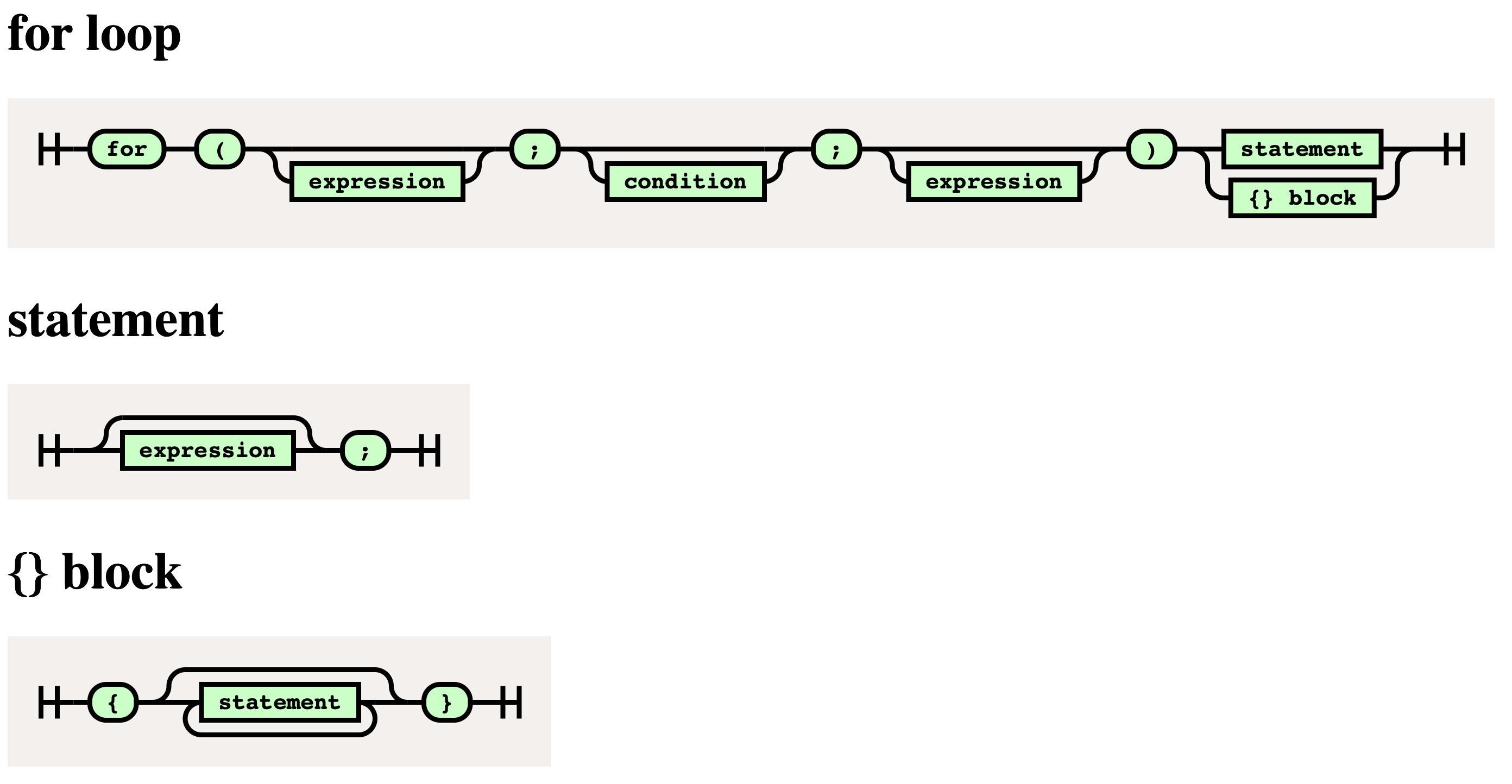Railroad diagrams, also known as syntax diagrams, are a visual way to represent the grammar of a programming language. To use it, you...
X1323: Valid for loop? (3)
Railroad diagrams, also known as syntax diagrams, are a visual way to represent the grammar of a programming language. To use it, you trace the diagram as if it was a railroad from left to right. The ovals represent terminals (exact characters or keywords) on the input. The rectangles represent non-terminals, typically defined by other diagrams or simply abstracted out for presentation.
for railroad diagram
The image below is a railroad diagram for the for loop in Java.

To process the diagram, follow the path:
- Move along the path from left to right.
- When you encounter a terminal (oval), match it exactly in your code.
- When you encounter a non-terminal (rectangle), look for another diagram as the definition (think of a method call).
- When the path loops back on itself, it indicates repetition. Follow the loop as many times as needed.
Question
Assume A(); counts as a valid statement. Is the code shown below a valid for loop?
int i = 0;
for (; i < 10; i++)
A();
Your Answer:
Feedback
Your feedback will appear here when you check your answer.
